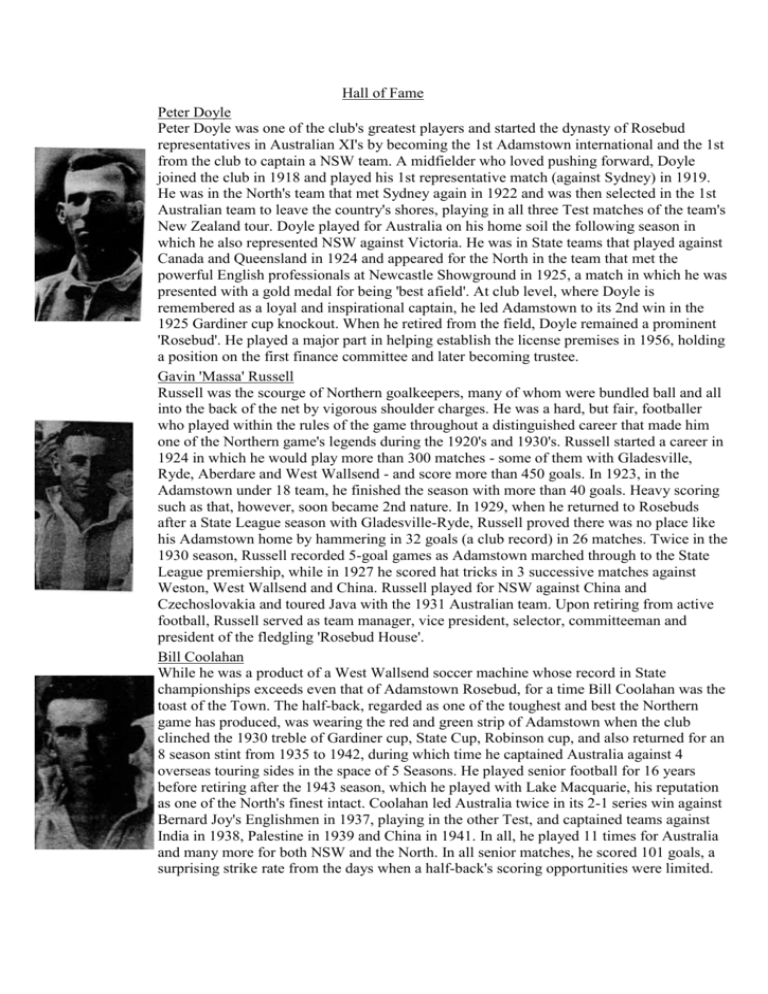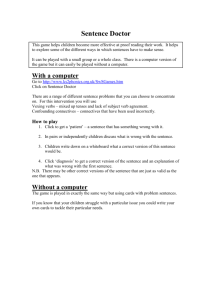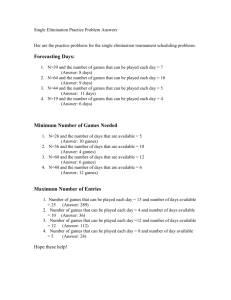Hall of Fame - Adamstown Rosebud FC
advertisement

Hall of Fame Peter Doyle Peter Doyle was one of the club's greatest players and started the dynasty of Rosebud representatives in Australian XI's by becoming the 1st Adamstown international and the 1st from the club to captain a NSW team. A midfielder who loved pushing forward, Doyle joined the club in 1918 and played his 1st representative match (against Sydney) in 1919. He was in the North's team that met Sydney again in 1922 and was then selected in the 1st Australian team to leave the country's shores, playing in all three Test matches of the team's New Zealand tour. Doyle played for Australia on his home soil the following season in which he also represented NSW against Victoria. He was in State teams that played against Canada and Queensland in 1924 and appeared for the North in the team that met the powerful English professionals at Newcastle Showground in 1925, a match in which he was presented with a gold medal for being 'best afield'. At club level, where Doyle is remembered as a loyal and inspirational captain, he led Adamstown to its 2nd win in the 1925 Gardiner cup knockout. When he retired from the field, Doyle remained a prominent 'Rosebud'. He played a major part in helping establish the license premises in 1956, holding a position on the first finance committee and later becoming trustee. Gavin 'Massa' Russell Russell was the scourge of Northern goalkeepers, many of whom were bundled ball and all into the back of the net by vigorous shoulder charges. He was a hard, but fair, footballer who played within the rules of the game throughout a distinguished career that made him one of the Northern game's legends during the 1920's and 1930's. Russell started a career in 1924 in which he would play more than 300 matches - some of them with Gladesville, Ryde, Aberdare and West Wallsend - and score more than 450 goals. In 1923, in the Adamstown under 18 team, he finished the season with more than 40 goals. Heavy scoring such as that, however, soon became 2nd nature. In 1929, when he returned to Rosebuds after a State League season with Gladesville-Ryde, Russell proved there was no place like his Adamstown home by hammering in 32 goals (a club record) in 26 matches. Twice in the 1930 season, Russell recorded 5-goal games as Adamstown marched through to the State League premiership, while in 1927 he scored hat tricks in 3 successive matches against Weston, West Wallsend and China. Russell played for NSW against China and Czechoslovakia and toured Java with the 1931 Australian team. Upon retiring from active football, Russell served as team manager, vice president, selector, committeeman and president of the fledgling 'Rosebud House'. Bill Coolahan While he was a product of a West Wallsend soccer machine whose record in State championships exceeds even that of Adamstown Rosebud, for a time Bill Coolahan was the toast of the Town. The half-back, regarded as one of the toughest and best the Northern game has produced, was wearing the red and green strip of Adamstown when the club clinched the 1930 treble of Gardiner cup, State Cup, Robinson cup, and also returned for an 8 season stint from 1935 to 1942, during which time he captained Australia against 4 overseas touring sides in the space of 5 Seasons. He played senior football for 16 years before retiring after the 1943 season, which he played with Lake Macquarie, his reputation as one of the North's finest intact. Coolahan led Australia twice in its 2-1 series win against Bernard Joy's Englishmen in 1937, playing in the other Test, and captained teams against India in 1938, Palestine in 1939 and China in 1941. In all, he played 11 times for Australia and many more for both NSW and the North. In all senior matches, he scored 101 goals, a surprising strike rate from the days when a half-back's scoring opportunities were limited. Joe Senkalski If they chose to be selfish about it, Novocastrians could rejoice in the fact that Joe Senkalski saved his best for his home town. The enigmatic midfielder, come-striker, served up some delightful memories in Northern football, starting back in 1976 with his grand final-winning solo for Adamstown, and culminating in 1984 when he led Rosebud United to victory in the National cup final. Yet Senkalski, still regarded as one of, if not the finest player to graduate from Northern football over the past decade, never managed to 'click' in an Australian shirt. He made 2 appearances in all and suffered the disappointment of being sent home twice from 2 overseas tours (to China and New Caledonia) without playing a game. The high point of his national career was his eye-catching display against Mexico in Melbourne in 1980. He remains, however, one of Rosebud's favourites in an impressive gallery of Australian representatives signed by Sydney Olympic in 1977, Senkalski returned to Newcastle the following year almost by public demand and over subsequent seasons was the subject of repeated calls from the North's soccer faithful to be reinstated in Australian teams. Sadly, the pleas fell on deaf ears. Ray Baartz While he wasn't chosen from Adamstown to represent Australia, there is no doubting that his early football education at Rosebud club played a big part in lifting him to a pedestal few in the game's history have enjoyed. When his career with the Socceroos’s ended, literally chipped down in his prime by a Uruguayan player in the build-up to the 1974 World Cup finals, there was no argument about Baartzys place as king of Australian soccer. He had played 59 times for his country, held vice-captaincy, and was the vital cog in the Australian team's drive toward Munich and an historic first appearance in the World cup finals. Born in Merewether, Baartz grew up in the soccer stronghold of Adamstown, graduating to the 1st team by the age of 17 where his performances earned him a scholarship to Manchester United. It was originally a 6 month trip, extended to 2 years at the request of the redoubtable Matt Busby. When he finally returned, he had one season with Adamstown before moving to Hakoah, in what was then a record $5600 transfer fee. His return to Newcastle was in some-what tragic circumstances. Having recovered from the paralysis caused by a Uruguayan assault during what proved to be his final game for Australia, Baartz put all his energies into his now floushing sports stores. Col Curran If Ray Baartz can lay claim to being one of the country's best football products, his 1974 World cup teammate, Col 'Bunny' Curran is a lay down misere for the title of most popular Australian representative. Curran remains one of the North's most popular sons years after his retirement from the game, testimony to the whole-hearted efforts he produced on the field, whether it be with Adamstown's 1st XI as a teenager, Newcastle KB United in its National League days, or in the famous green and gold strip. Adamstown was Curran's 2nd senior football stop on the road to Australian selection. A highly-talented fullback, Curran graduated to Maitland's 1st team before moving on to Adamstown, where, like Baartz, he was offered a 6-month scholarship with Manchester United. He returned to Adamstown, played further football in the North before moving to Marconi on a $3000 transfer fee, and rejoined Adamstown before making a 2nd move to Sydney, this time to Western Suburbs, for $7000. The move was inevitable, since the Australian selectors had already earmarked the pocket dynamo for the green and gold. Curran played 35 times for Australia, including the World Cup finals in Munich, making his last appearance in the team in 1979 when incumbent Socceroo coach Rudi Gutendorf plucked Curran from Newcastle United's NSL ranks to play New Zealand. Not surprisingly, he was named one of the best on the ground






